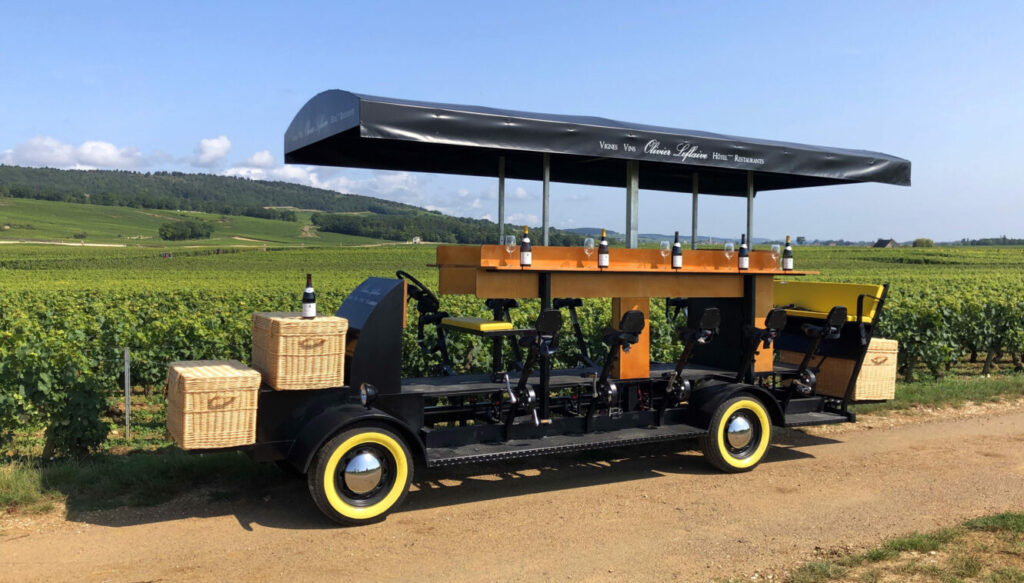
A wine appellation name can tell you a lot about what’s in the bottle. An appellation is a defined geographical area, such the French Appellation d’Origine Contrôlée (AOC) or the American Viticultural Area (AVA). Wines from many appellations, such as a Napa Valley AVA Cabernet Sauvignon or a Châteauneuf du Pape AOC, have a “sense of place” – when you taste it, there’s little doubt about its origin.
- Size matters: smaller appellations are more meaningful. If your bottle is labeled “Vin de France,” that doesn’t tell you much beyond the fact that the grapes came from somewhere in France and the wine probably won’t make you sick. But if it’s from a small appellation such as Napa’s Howell Mountain AVA, the wine will be distinctive. (Napa Valley itself is an AVA, and it encompasses sixteen smaller AVAs, such as Howell Mountain).
- Of course, you can carry a good idea too far – some regions have complicated their appellation system to the point of leaving us scratching our heads and wondering what’s in the bottle.
The “Old World” (Europe) and the “New World” (everything else) approach appellations differently. The former defines appellation boundaries, but also dictates what grapes can be used, how they must be grown, and winemaking techniques. The latter generally defines an appellation’s geographic boundaries and leaves winemaking details to the producer.
- The appellation concept arose in early twentieth century France as a means of combating fraud. To increase their profits, unscrupulous producers adulterated wines from prestigious regions with cheap wines from lesser regions. The appellation system was intended to ensure that a wine from a given region actually contains authorized grapes from that region. That said, it's not a guarantee of quality.
- The main drawback to the Old World approach is that it stifles innovation. Sometimes the prescribed grapes and winemaking methods don’t make sense. In Tuscany, one producer said the hell with the rules and did it his own way – thus was born the Super Tuscan. Because he didn’t follow the rules, the wine was classified as a simple vino di tavola (table wine).
- We have a primer on French and Italian appellations on our home page.
And now, a challenge. There are many really nice wines that folks won't try because they’re unfamiliar. So, why not select your next three wines from unfamiliar appellations? Not sure what to try? Look through our past blogs, or go to a wine store with a knowledgeable staff and ask them to recommend something different.
- If you want to learn more about the wines you select, most appellations have great resources online. Some good examples are: Napa Valley Vintners; Rioja Wine; and Vins de Bourgogne. Learning about a new region is a great thing to do when you’re stranded in the middle of a storm, as many of readers across the country are today.
Our Wine of the Week is a 2018 Olivier Leflaive Les Sétilles ($23 retail). It’s hard to find a relatively inexpensive good white Burgundy, and this wine consistently delivers good value. It also illustrates an important point about appellations. Les Sétilles is made mostly from vineyards within the communes of Puligny Montrachet and Meursault, where you’ll find expensive grand cru and premier cru wines. But Les Sétilles is classified as a lesser “Vins de Bourgogne” regional appellation. The weird thing about Burgundy is that one side of a road can be an expensive Grand Cru vineyard, and the other side can produce lesser wines.
- Les Sétilles has aromas of apple, pear, citrus, and white flowers. On the palate, it’s medium bodied, with stone fruits, a hint of minerality and oak, bright acidity, and a long, pleasant finish. It’s not a particularly complex wine but we rated it as good to very good.
- Try it as an aperitif, with charcuterie, or with a simple chicken dish.
Cheers!
